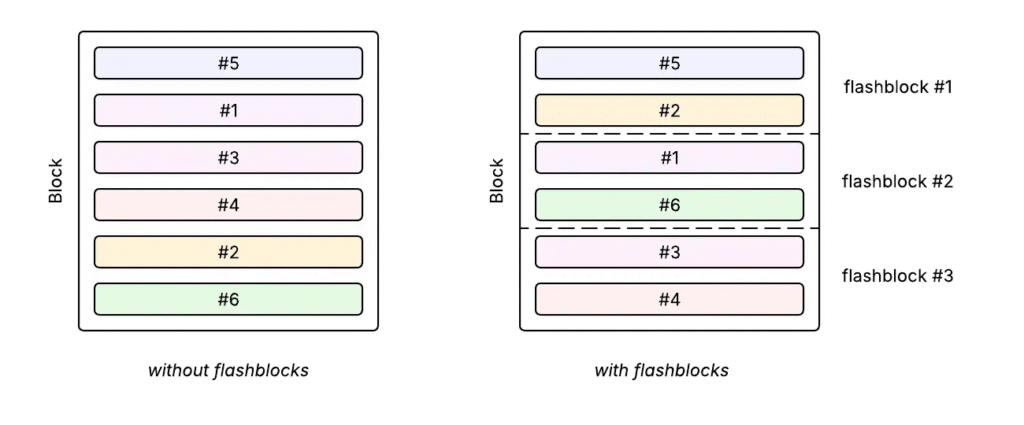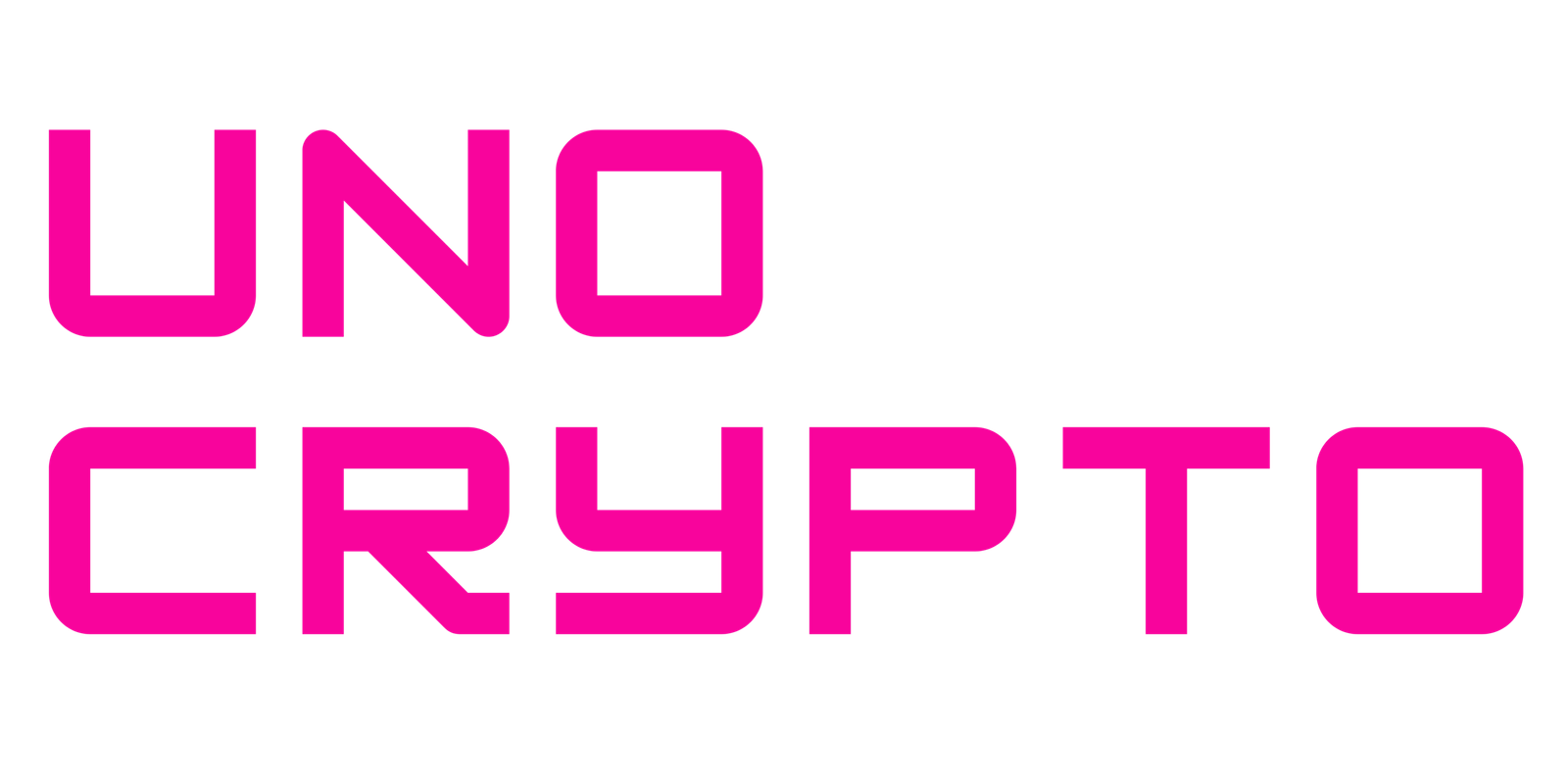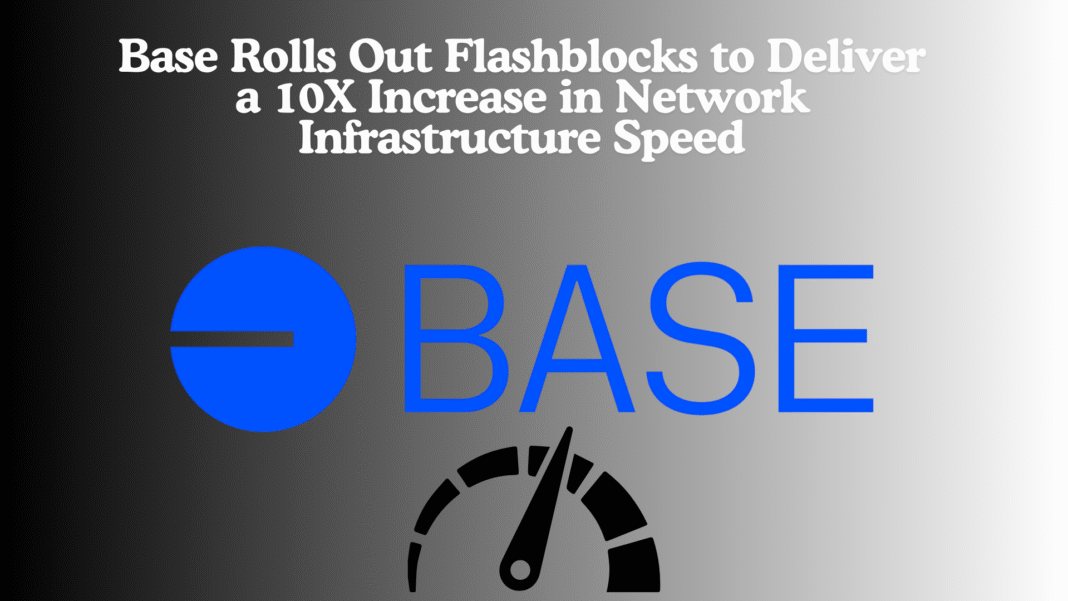Base, an Ethereum Layer 2 network, has rolled out a powerful infrastructure upgrade called Flashblocks, significantly enhancing the speed and responsiveness of its blockchain.
The new system slashes the block creation time from 2 seconds down to just 200 milliseconds, making Base the fastest EVM-compatible chain available today.
Flashblocks, developed by Flashbots, introduces rapid “preconfirmation blocks” that are streamed to the network in near real time.
The innovation is expected to lay the foundation for the anticipated “Base App,” an all-in-one decentralized application.
The application will integrate wallet, trading, messaging, and social features into one platform, positioning Base as a frontrunner in the race to build the first true “everything app” on blockchain.
How Flashblocks Work and Why They Matter
Traditionally, Base processes a block every 2 seconds. With Flashblocks, the network now produces smaller, incremental sub-blocks every 200 milliseconds.

Each Flashblock carries about 10% of the total transaction volume of a regular block (measured by gas), and multiple Flashblocks can be combined to reconstruct a full block.
These sub-blocks provide developers and users with near-instant transaction feedback, creating the perception of immediate execution and drastically improving user experience.
Importantly, Flashblocks are optional and backward-compatible, meaning existing nodes and apps can continue to operate as normal without any changes.
However, those seeking ultra-fast responsiveness can integrate the new system.
Also Read: Phantom Acquires SimpleHash To Improve Speed and Reliable Real-Time Token and NFT Data
Developer Integration and Technical Considerations
Developers, node operators, and wallet providers interested in integrating Flashblocks can begin experimenting on Base Sepolia testnet ahead of its full Mainnet rollout.
Integration options include subscribing directly to Flashblocks via a websocket or, preferably, using an RPC provider that supports them.
The setup ensures compatibility with existing libraries and provides fallback mechanisms in case of outages.
The upgrade also introduces new considerations for transaction ordering and gas usage.
For instance, because each Flashblock only processes a fraction of the block’s gas limit, transactions with high gas requirements may face slight delays as they wait for later Flashblocks with sufficient capacity.
The structured, time-based system prevents last-second reordering, promoting fairness and predictability.
Also Read: ETH Gas Fee Reduction Plan Could Increase Transaction Speed By 150%, Says Vitalik Buterin
Managing Reorgs, Outages, and Reliability
While Flashblocks drastically reduce transaction latency, Base has also taken steps to address potential complications.
One key challenge is “reorgs”, instances where the stream of Flashblocks differs from the final block, possibly leading to mismatched transaction data.
Although rare, developers are advised to build their apps to handle such discrepancies.
Additionally, during Flashblock outages, the network will revert seamlessly to the standard 2-second block times without service disruption.
RPC calls and transaction submissions will continue functioning, albeit at reduced speed.
The Base team has committed to a 99.9% uptime SLA and designed the infrastructure to recover gracefully, ensuring consistent reliability for builders and end users alike.
Also Read: New Proposal Aims To Increase Ethereum’s Speed by 50%
Broader Implications and Community Impact
The launch of Flashblocks is a major milestone in Base’s mission to create a lightning-fast, developer-friendly onchain ecosystem.
It reflects Coinbase’s broader ambition to transform Base into a hub for decentralized applications with real-world usability and performance.
The move also follows a rocky April for the network, when a token it endorsed briefly crashed post-launch, wiping out over $15 million in investor funds and attracting public criticism.
With Flashblocks, Base appears to be doubling down on improving user experience and technical credibility.
As developers begin building with Flashblocks, the upgrade could usher in a new era of high-performance decentralized applications, setting a new industry standard for transaction speed and responsiveness.
Also Read: JPMorgan Pilots JPMD Deposit Token On Coinbase’s Base Network Amid GENIUS Act Passing


